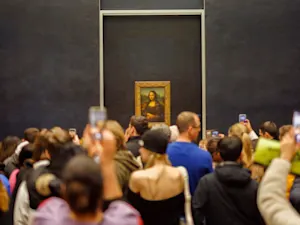
The Culinary Journey to a Michelin Star
Ever wondered what it takes for a restaurant to earn one of the coveted Michelin Stars? These prestigious awards are more than just shiny symbols; they represent the pinnacle of culinary excellence. Let's dive into the world of Michelin Stars and uncover what sets these elite restaurants apart.
The Origins of the MICHELIN® Guide
The Michelin Guide, renowned for its prestigious star ratings, has a fascinating history that dates back to the early 1900s. Initially created by the Michelin tire company to boost driving and promote tire sales, the guide has since evolved into a global benchmark for dining excellence. The first guide was published in 1900 and was primarily focused on providing useful information for travelers, such as maps, tire repair and replacement instructions, and hotel and restaurant recommendations in France. Initially, the guide was free. However, when Andre Michelin discovered one being used to prop up a workbench at a tire shop, he decided to charge seven francs for it, believing that "a man only truly respects what he pays for."
By the 1920s, the guide began to award stars to fine dining establishments, and thus, the Michelin Star system was born.

What Do Michelin Inspectors Look For?
Earning a Michelin Star is no easy feat. Michelin inspectors evaluate restaurants based on five key criteria: quality of the ingredients used, mastery of flavor and cooking techniques, capture the personality of the chef in the cuisine, value for money, and consistency of food between visits. Each dish must showcase exceptional skill, balance, and innovation, while the overall dining experience, including service and ambiance, must be outstanding. Consistency is crucial; a restaurant must deliver excellence every time, not just on a single occasion. These factors ensure that only the very best establishments receive a star, and even fewer earn the coveted two or three stars.

The Rigorous Inspection Process
Michelin inspectors are notoriously secretive, often dining anonymously to ensure they receive the same experience as any other guest. This process is repeated multiple times, with different inspectors visiting at different times, to maintain objectivity and fairness. The evaluation focuses not just on the food, but also on the overall dining experience, including the ambiance, service, and even the presentation of the dishes.

Beyond the Stars: Impact and Prestige
Earning a Michelin Star can significantly boost a restaurant's reputation and business. It can attract food enthusiasts from around the world, eager to experience the culinary excellence that a Michelin Star signifies. However, with great prestige comes great pressure. Due to the high expectations of the Michelin Star system, some restaurateurs reject their ratings, arguing that the standards limit a chef's creativity in the kitchen.
The Pursuit of Perfection
Ultimately, the journey to earning a Michelin Star is a testament to a chef's passion, creativity, and relentless pursuit of perfection. It's a challenging path, but for those who achieve it, the rewards are unparalleled. Whether you're a budding chef dreaming of stars or a food-lover eager to understand what sets Michelin-starred restaurants apart, the story behind these stars is as rich and complex as the dishes they celebrate.
References: What it takes to earn a michelin star | How Restaurants Get Michelin Stars: A Brief History of the Michelin Guide | History of the Michelin Guide
























